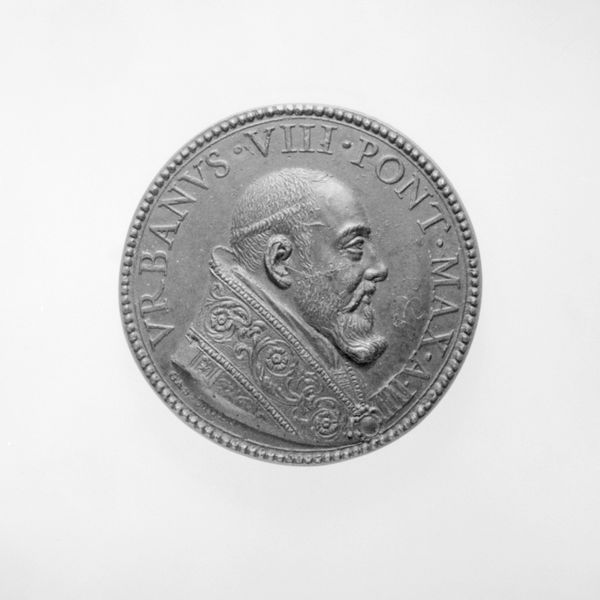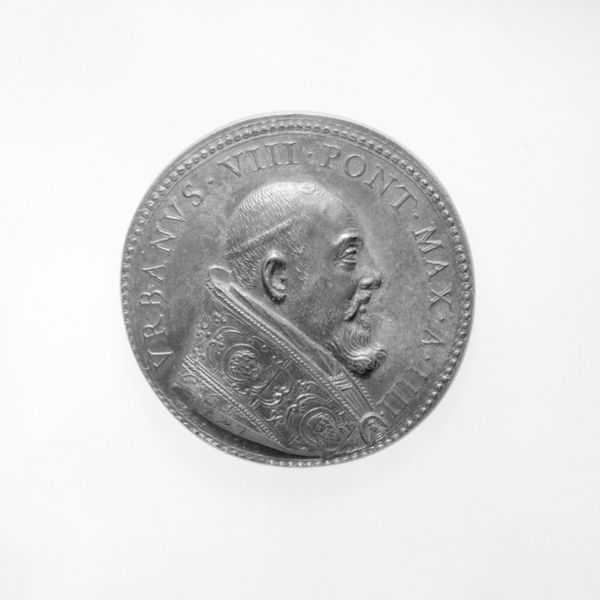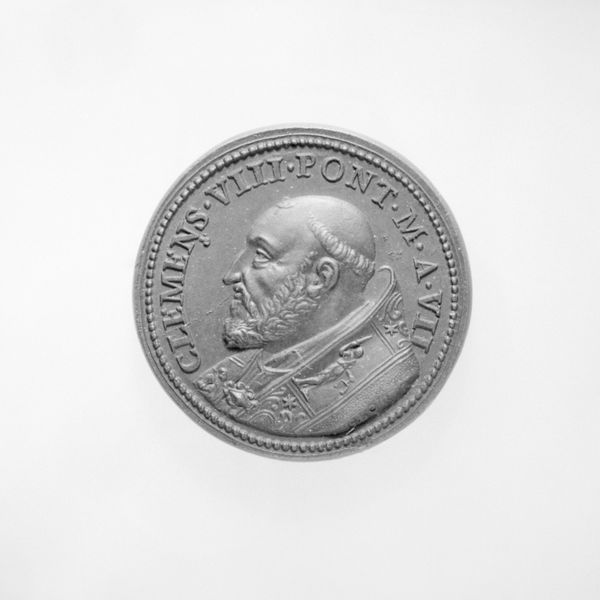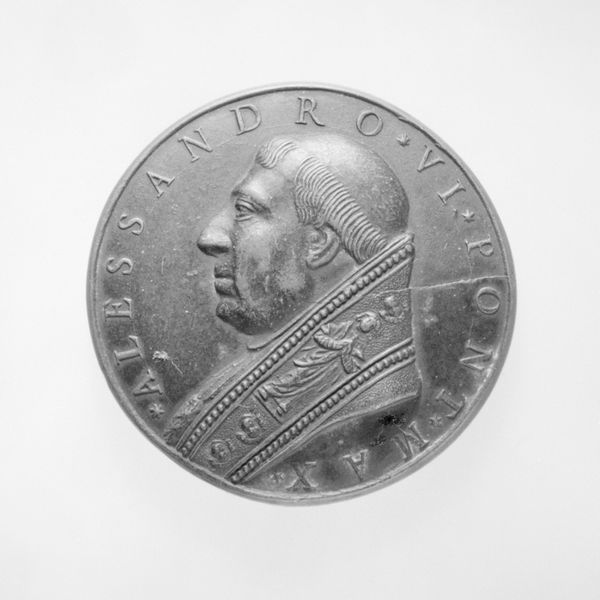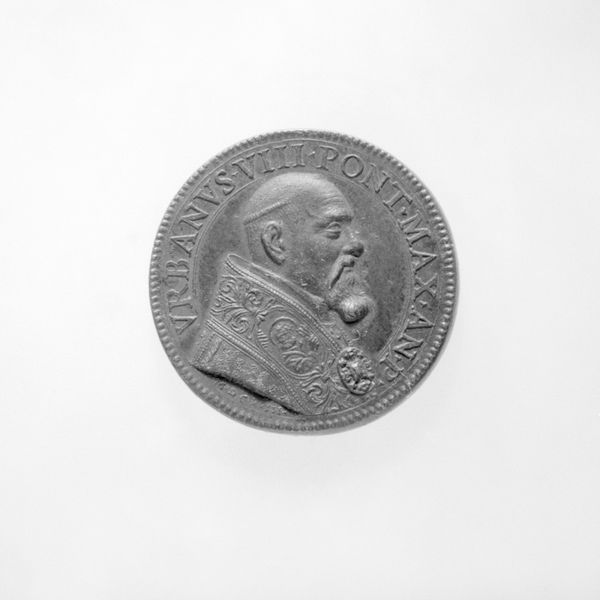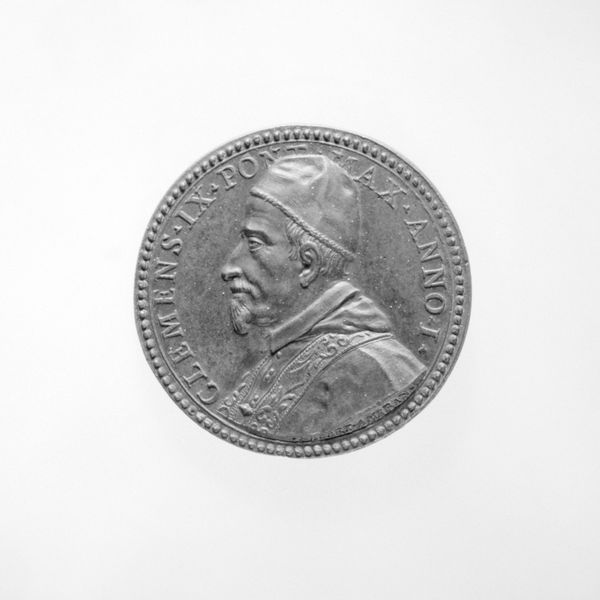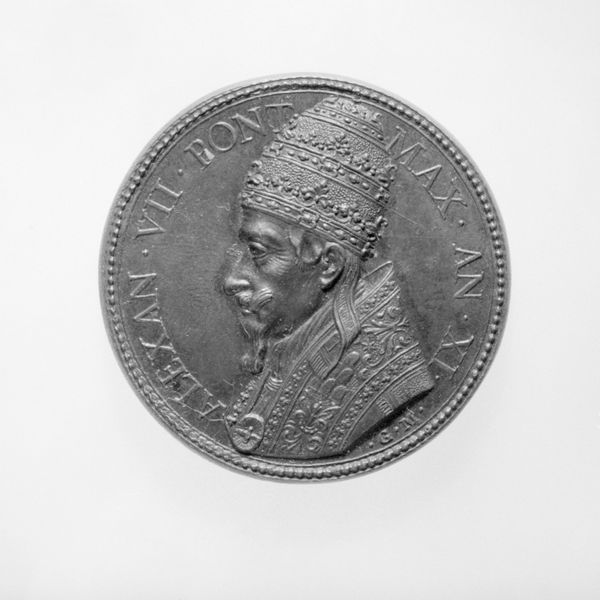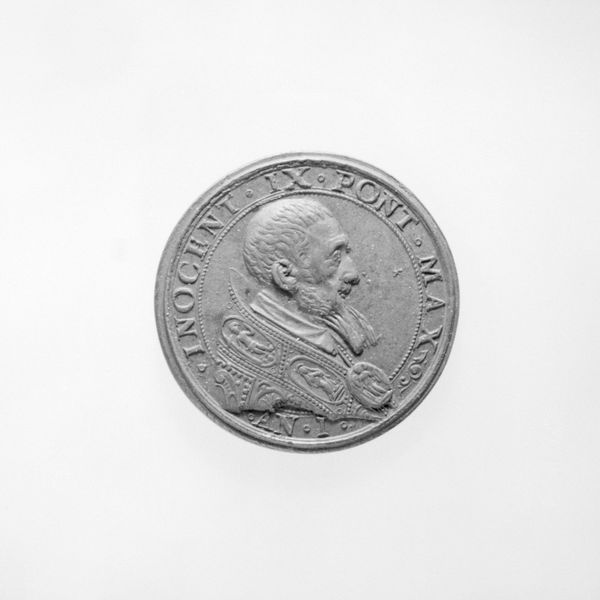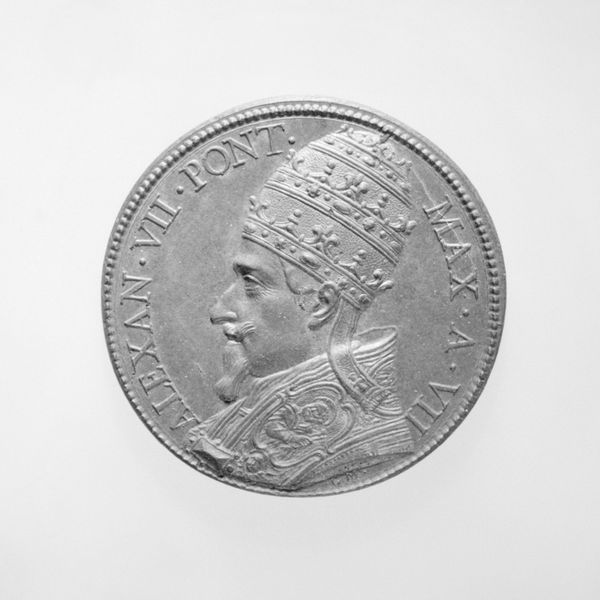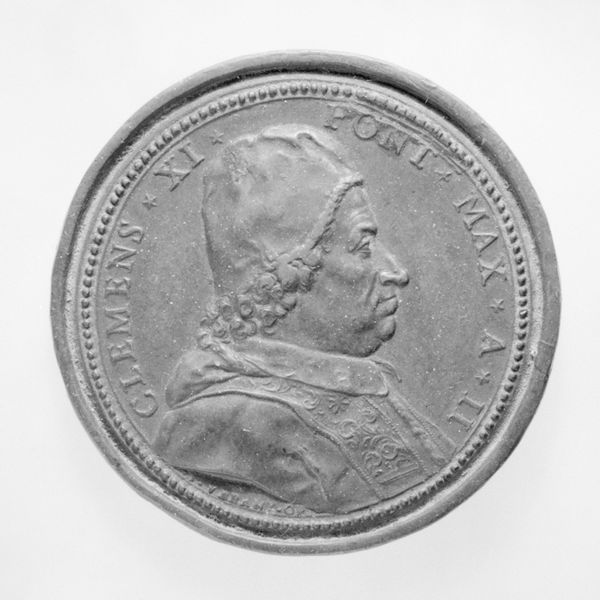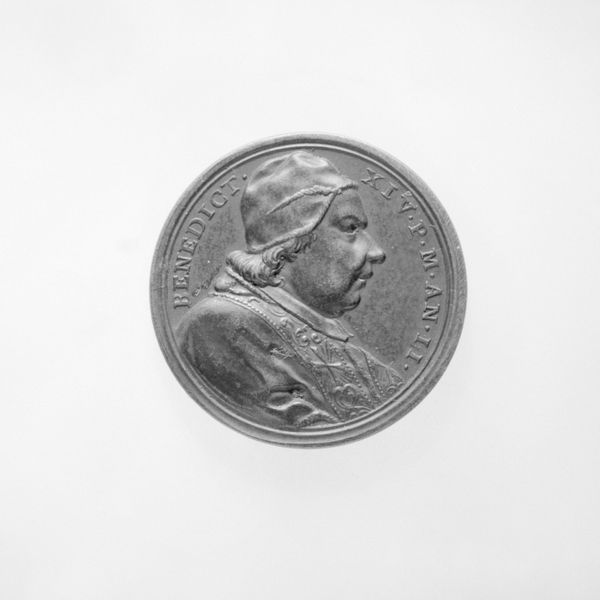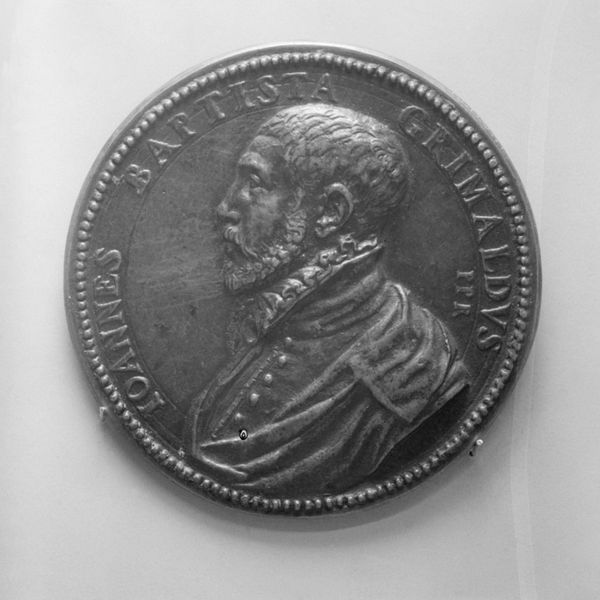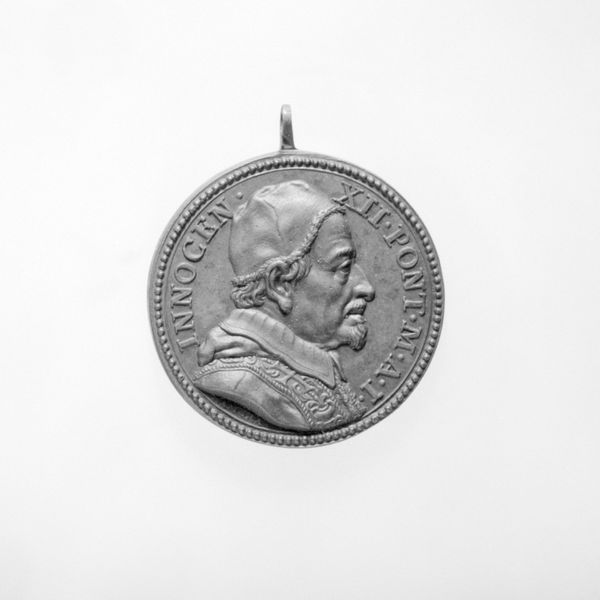
metal, relief, sculpture
#
portrait
#
medal
#
metal
#
relief
#
11_renaissance
#
sculpture
#
decorative-art
#
statue
Dimensions: Diameter: 1 1/2 in. (3.8 cm)
Copyright: Public Domain
Editor: So, here we have "Paul V (Pope, 1605–21)," a metal relief portrait created by Giacomo Antonio Moro in 1617. It's…a coin? A medal? I’m immediately struck by how formal and official it feels, but also…a bit cold. What stands out to you about this piece? Curator: This medal presents Paul V, capturing more than just his likeness; it encapsulates the papacy's authority during a period of intense religious and political struggle. What symbols do you notice being deployed, and what memory or emotional connection could be formed? Editor: Well, aside from his garments, which signify his high rank, not much else comes to mind immediately. Can the lettering be considered a symbol? Is the choice of metal also symbolic? Curator: Absolutely! Inscriptions are fundamental; language itself is a symbolic act. "PAVLVS V BVIRGHESIVS ROMANVS PONT MAX AN XIII", Paul V, member of the Borghese family, Roman Pontiff, in his 13th year of papacy...The lettering serves to legitimize his power, anchoring his presence in time and lineage. And consider the use of metal: its permanence and preciousness mirror the Church’s aspiration for timeless, unwavering influence. Consider how this contrasts to temporary, fleeting materials used for secular matters. Does the medal's symbolism grant authority? Editor: That’s a fantastic point. The material’s longevity makes a very powerful statement about the Church's enduring power and authority, one intended to extend far beyond Paul V’s lifetime. It makes me wonder if more contemporary artworks employ similar strategies? Thank you, that was quite enlightening! Curator: Indeed. Visual culture, at its core, shapes not only our present understanding but molds collective memory for posterity. Analyzing these works really is a fascinating means to investigate power dynamics.
Comments
No comments
Be the first to comment and join the conversation on the ultimate creative platform.
